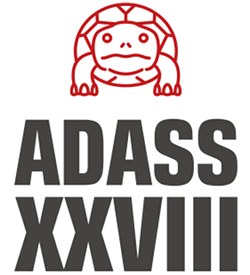This section gathers tutorials explaining the features and usage of the various CDS services.
More information on the usage of the various CDS services can be found in the individual service documentation pages, or in the different FAQs.
You can also use the search feature on the CDS website to find information.
Introduction to the CDS webpages and to Aladin desktop
This tutorial explains how to collect information about astronomical objects and locate catalogs and images using the CDS services. See the installation instructions for Aladin desktop.
This tutorial is available as a video on YouTube or the CDS Unistra POD channel.
Python tutorials: Accessing and using astronomical data from Python
Python notebooks are a convenient way to demonstrate the capabilities and usage of the CDS and other Virtual Observatory (VO) services. You do not need to know Python to follow these tutorials.
They are hosted on GitHub at cds-astro/tutorials.
How to use the tutorials
On the github page, scroll down to the section how to use the tutorials for a detailed explanation of their usage.
Content of the tutorials
The different notebooks are in the Notebooks folder of the github repository.
You can also consult them as webpages by clicking on their titles in the list
below. The little buttons indicate which services or Python libraries are used
in each tutorial.
-
Introduction to using the CDS services with Python
We show how to call Simbad, Aladin Lite, Vizier and X-match in a Jupyter Notebook.
-
First steps with the Multi-Order Coverage data structure
We explore Arp's Catalog of peculiar Galaxies and extract the galaxies explored both in the SDSS and GALEX surveys by using MOCs. This tutorial highlights two python modules for querying data: astroquery and pyvo.
-
The Simple Spectral Access Protocol to explore Abel 1656
This tutorial focuses on the Coma Cluster of Galaxies. In particular, we search for redshift information of galaxies in the spatial vicinity of the cluster centre. To get this information we get catalogues with measured redshifts and a spectrum, from which we measure a redshift. It uses the Simple Spectral Access (SSA) protocol of the virtual observatory.
-
Combining the CDS services to study gamma-ray and high energy spectral bands
For this tutorial we focus on gamma-ray and high energy spectral bands and start by querying suitable catalogues using VO tools. After that we cross-correlate catalogues to find entries for objects in different photon energy bands. We then apply selection criteria to extract sources from a catalogue and use the resulting observational measures of the selected objects to explore possible correlations. We close by displaying spectral energy distributions obtained from different photometric data sets.
-
Cross matching catalogs to discover potential brown dwarfs
Brown dwarfs are objects occupying the gap between the least massive stars and the most massive planets. They are intrinsically faint objects. Hence, heir detection is not straightforward and, in fact, was almost impossible until the advent of global surveys at deep optical and near-infrared bands like SDSS, 2MASS or DENIS. We propose here to mine the 2MASS point source catalogue (2MASS-PSC) and SDSS-DR9 databases to identify T-type brown dwarfs through an appropriate combination of colors in the optical and the infrared, an approach that perfectly fits into the Virtual Observatory.
-
Advanced usage of HiPS and MOCs in the MASH planetary nebulae catalog
This tutorial is centred on using HiPS and MOC to efficiently reach your science goals. In particular it will help you answer questions such as: What is the footprint of my imaging survey? Where on the sky do we have low foreground extinction? Where do these two regions overlap? How can I get interesting catalogue entries within these regions? This questions are answered by building MOCs from a set of images. We also build a MOC from the pixel values of an all-sky survey. We then move on to query catalogues in an intersection of these MOCs.
-
Planning multi-messenger observations rapidly with MOCs
We will first explore Multi-Order Coverage (MOC) data structure manipultation, then we will see how astroplan and Space-Time Multi Order Coverage (STMOC) can be combined to plan observation according to a MOC. The final step is a concrete example illustrating how STMOCs can be built in a few seconds to plan observations from three ground observatories, with the aim to cover of the sky localisation produced after detection of a gravitational wave.
Video tutorials
These short video tutorials describe how to perform simple tasks, or highlight features of the CDS services.
Introducing the Aladin stack
Aladin SIMBAD pointer tutorial
Check out our YouTube channel for a complete list of CDS video tutorials.
If you can not access YouTube, these video tutorials are also available on the CDS channel of the Strasbourg University POD platform.
HiPS tutorials
ADASS Tutorial

In 2018, CDS presented a 90 minutes tutorial on All-sky astronomy with HiPS and MOCs.
OV-France tutorial
 In 2024, Thomas Boch presented a HiPS tutorial during the OV-France semi-hackathon.
In 2024, Thomas Boch presented a HiPS tutorial during the OV-France semi-hackathon.
PDF tutorials
Visualizing starlight polarization maps with Aladin
SIMBAD introduction tutorial
Older step-by-step tutorials for the CDS services.
Use of VO tools for education
Tools like Aladin can be used for educational purposes. A number of practical use cases have been developed and can be downloaded from the EuroVO for education website.